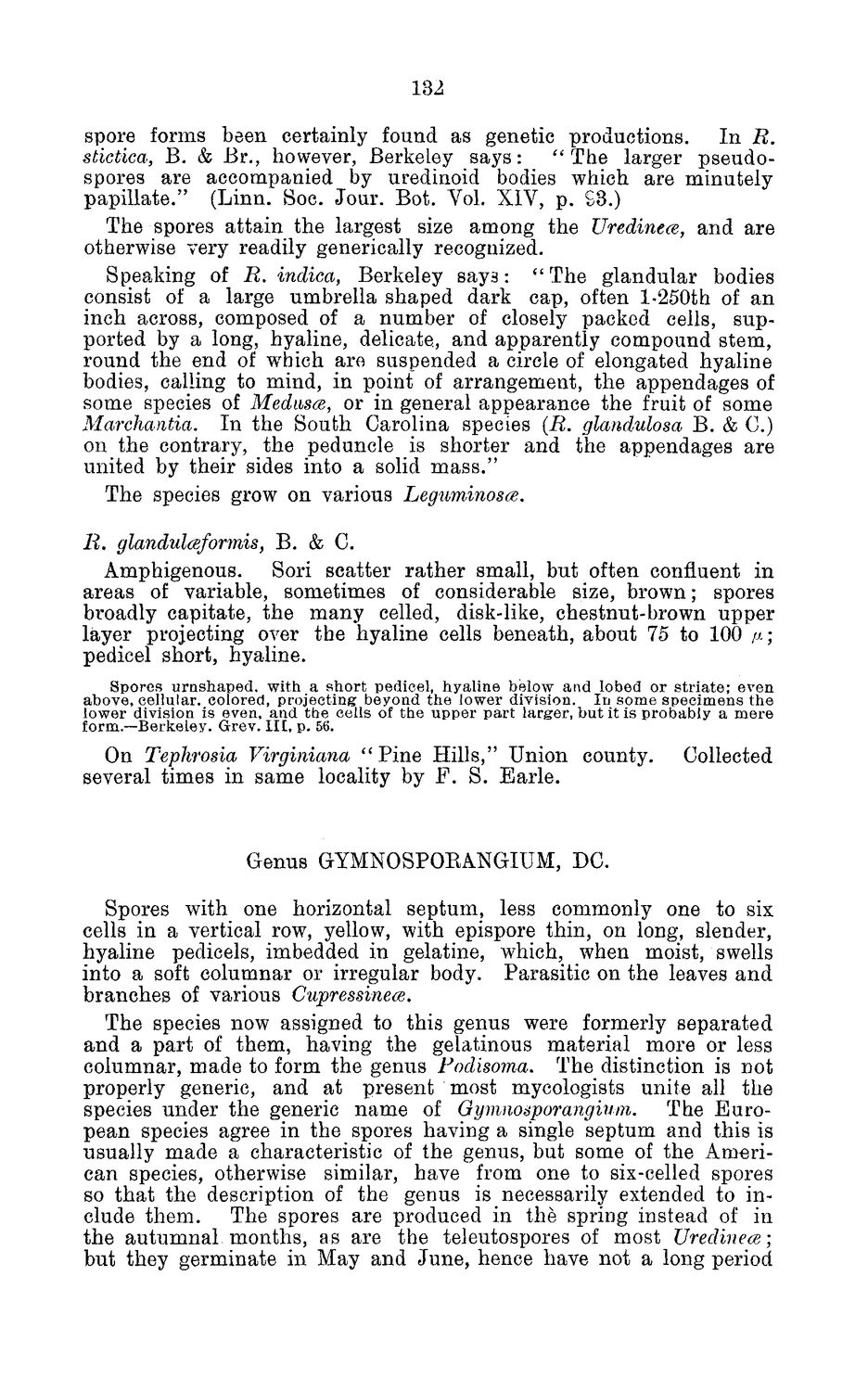| |
| |
Caption: Board of Trustees Minutes - 1884
This is a reduced-resolution page image for fast online browsing.

EXTRACTED TEXT FROM PAGE:
132 spore forms been certainly found as genetic productions. In R. stictica, B. & Br., however, Berkeley says: " T h e larger pseudospores are accompanied by uredinoid bodies which are minutely papillate." (Linn. Soc. Jour. Bot. Vol. XIV, p. S3.) The spores attain the largest size among the Uredinece, and are otherwise very readily generically recognized. Speaking of R. indica, Berkeley says: " T h e glandular bodies consist of a large umbrella shaped dark cap, often l-250th of an inch across, composed of a number of closely packed cells, supported by a long, hyaline, delicate, and apparently compound stem, round the end of wThich are suspended a circle of elongated hyaline bodies, calling to mind, in point of arrangement, the appendages of some species of Medusa, or in general appearance the fruit of some Marchantia. In the South Carolina species (R. glandulosa B. & C.) on the contrary, the peduncle is shorter and the appendages are united by their sides into a solid mass." The species grow on various Legwninosce. R. glandulceformis, B. & C. Amphigenous. Sori scatter rather small, but often confluent in areas of variable, sometimes of considerable size, brown; spores broadly capitate, the many celled, disk-like, chestnut-brown upper layer projecting over the hyaline cells beneath, about 75 to 100 n; pedicel short, hyaline. Spores urnshaped. with a short pedicel, hyaline below and lobed or striate; even above, cellular, colored, projecting beyond the lower division. In some specimens the lower division is even, and the ceils of the upper part larger, but it is probably a mere form.—Berkeley. Grev. II£, p. 56. On Tephrosia Virginiana " P i n e Hills," Union county. several times in same locality by F. S. Earle. Collected Genus GYMNOSPOBANGIUM, DC. Spores with one horizontal septum, less commonly one to six cells in a vertical row, yellow, with epispore thin, on long, slender, hyaline pedicels, imbedded in gelatine, which, when moist, swells into a soft columnar or irregular body. Parasitic on the leaves and branches of various Cupressinece. The species now assigned to this genus were formerly separated and a part of them, having the gelatinous material more or less columnar, made to form the genus Fodisoma. The distinction is not properly generic, and at present most mycologists unite all the species under the generic name of Gymnosporangium. The European species agree in the spores having a single septum and this is usually made a characteristic of the genus, but some of the American species, otherwise similar, have from one to six-celled spores so that the description of the genus is necessarily extended to include them. The spores are produced in the spring instead of in the autumnal months, as are the teleutospores of most Uredinece; but they germinate in May and June, hence have not a long period
| |